Tarantulas are a type of spider that have over 850 different species.
These spiders are often misunderstood for being creepy crawly creatures. The truth is that they can make very unique and exciting pets.
Tarantulas are easier to care for than most pets. They are also easy to feed because you only have to drop food into their tank once a week! Pet owners love them for their unique appeal and exotic status.
There are many different tarantulas, so choosing the right species is a must! Continue reading learn about the best 12 pet tarantulas for beginners.
12. Skeleton Tarantula
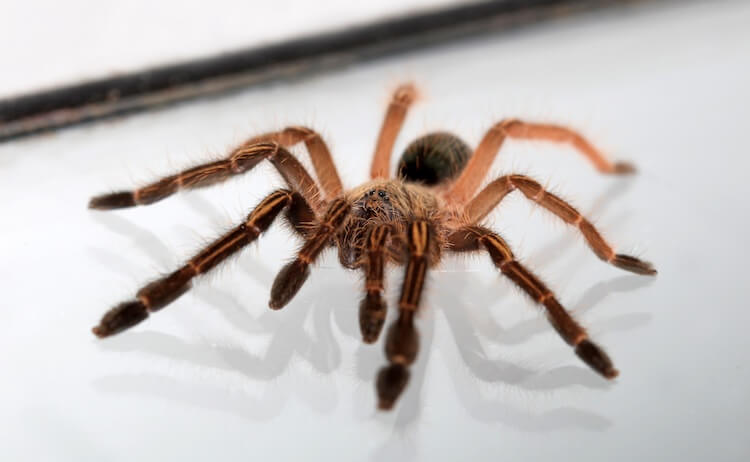
The Skeleton Tarantula is named after the white stripes that run down its long legs. Their body can also be white or black, further adding to this spider’s skeleton-like appearance.
Skeleton species are a South American spider. They are commonly found in the Brazilian Amazon as well as in French Guinea, humid grasslands, and rainforests.
The Skeleton is relatively easy to keep. It eats lots of different prey and is not terribly picky about humidity and temperature requirements. However, handling this species should be kept to a minimum. They can be very quick and defensive.
Skeleton Tarantulas can make a good beginner spider, but they are best suited towards keepers that have no plans to handle or interact with their spider.
When taken care of properly females live 15 years, while males only live for three to four years. The Skeleton Tarantula usually costs $50 to $80.
11. Pumpkin Patch Tarantula
The Pumpkin Patch Tarantula includes all of the species under the Hapalopus genus. It is considered to be a “dwarf” tarantula, meaning it is much smaller than the average species. It only grows up to three inches long and requires just a one-gallon tank.
Their size makes them ideal for pet owners who do not have much room to house their spider.
Pumpkin Patch Tarantulas are not as bristly as most, but they are still a unique color. Its legs are generally a solid orange-brown color and its body is black with orange patches, giving it a pumpkin-patch pattern.
They may be small, but this species can live just as long. Females live between 8 and 10 years and males 3 to 4 years. Because of their small size, they require a special diet of fruit flies or similar insects instead of the larger crickets and mealworms
The Pumpkin Patch is easy to care for and great for those who want a smaller spider. They cost about $25 to $45.
10. Green Bottle Blue Tarantula
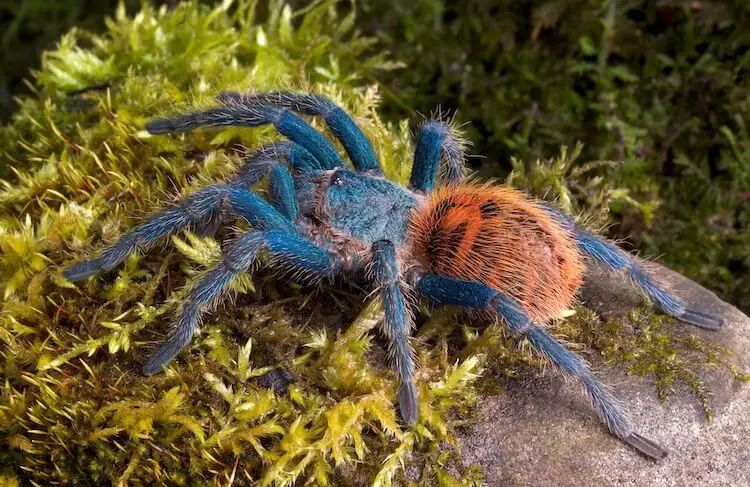
The Green Bottle Blue Tarantula is well-known for its green, blue and orange body and royal blue legs. This is a beautiful pet tarantula that many owners want to have! It is sure to brighten any room.
This blue spider is found on the Paraguaná Peninsula on the northern coast of Venezuela.
They tend to be quick and skittish and live in scrub grasses and at the bases of cacti. They often live in desert or grassland areas.
Green Bottle Blues are not the most docile pet spider, but it is not overly defensive. Though they are a skittish species, they can still be cared for by any beginner and make a great display pet.
This beginner spider is simple to care for and costs $60 to $100.
9. Mexican Redrump Tarantula
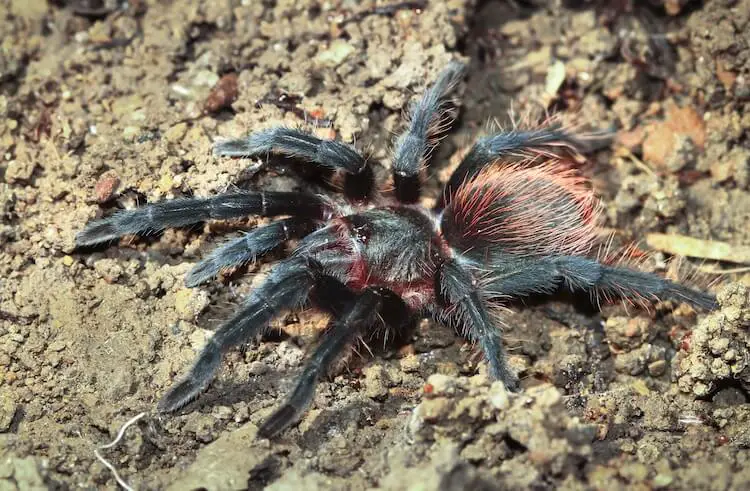
The Mexican Redrump Tarantula is one of several Mexican red species.
Mexican Redrumps are named for the red coloring on their abdomen. The rest of their body is usually a black or dark brown color.
Redrumps live in areas of low, dry vegetation, which allows them to easily dig tunnels. They are a burrowing tarantula and have been shown to make extensive tunnel systems in the wild. As a pet they will need several inches of substrate to burrow.
Mexican Redrumps are the first species on this list to be considered docile.
They are hardy tarantulas and adapt very well to captivity. They may even tolerate gentle handling from time to time, but most of the time they will be out in the open in their 5-gallon tank.
The Mexican Redrump is a low maintenance spider and can be purchased for $25 to $50.
8. Mexican Redleg Tarantula
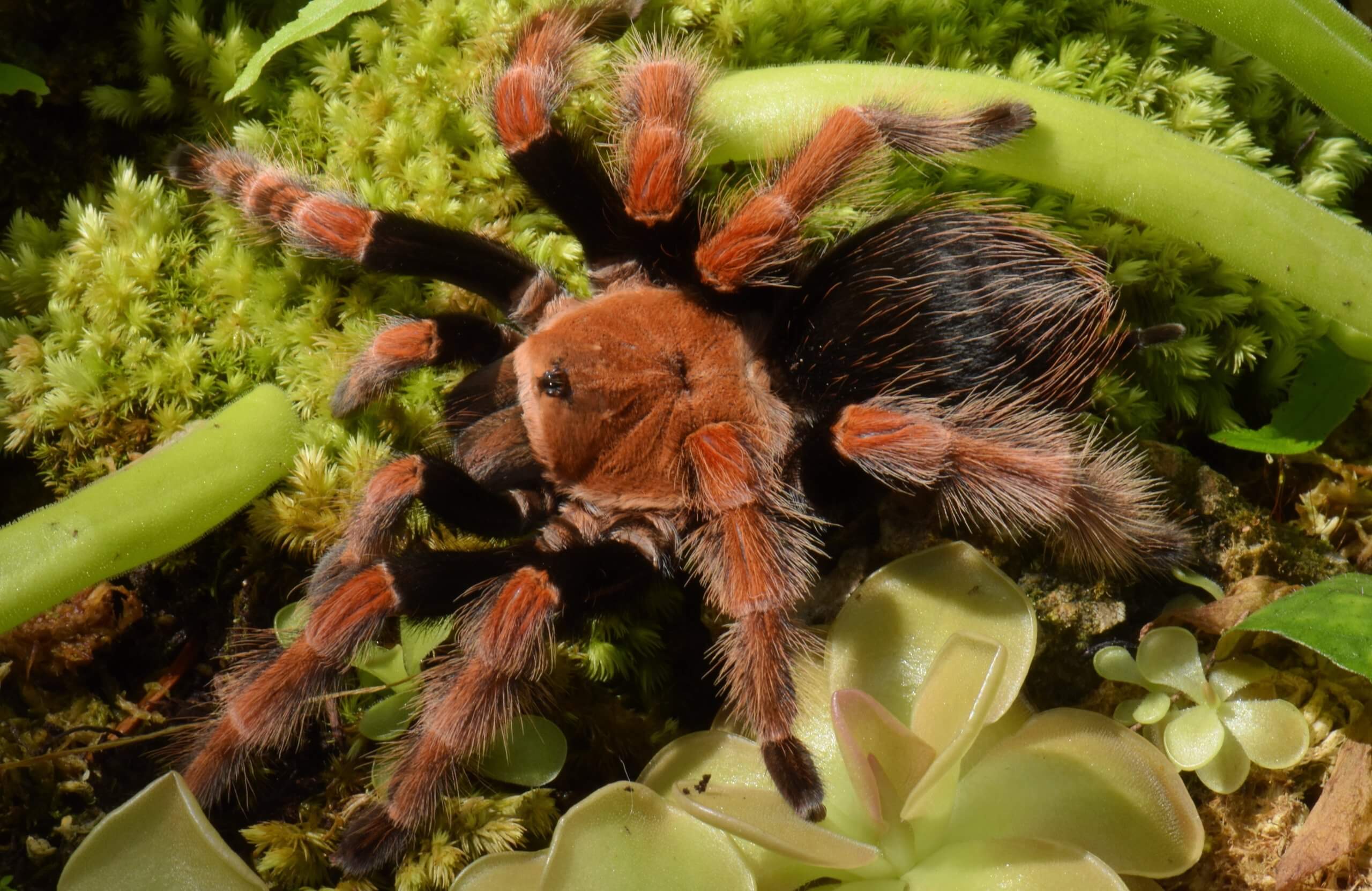
The Mexican Redleg Tarantula is another Mexican species. This spider is named after its red-orange legs. This orange color covers the entire leg, unlike in the Mexican Redknee in which only parts of each leg segment are red.
They may not be as popular as the Mexican Redknee (#7), but they are docile pet tarantulas that rarely bite.
This species often tolerates being gently held from time to time.
Redlegs are often quiet and low maintenance. They generally will sit in one spot most of the time, but you may find them hunting for food, or trying to burrow into their substrate. They are a great pet for someone who only wants to watch and only occasionally feed their spider.
Female Red-Legged Tarantulas can live up to 30 years and cost $70.
7. Mexican Redknee Tarantula
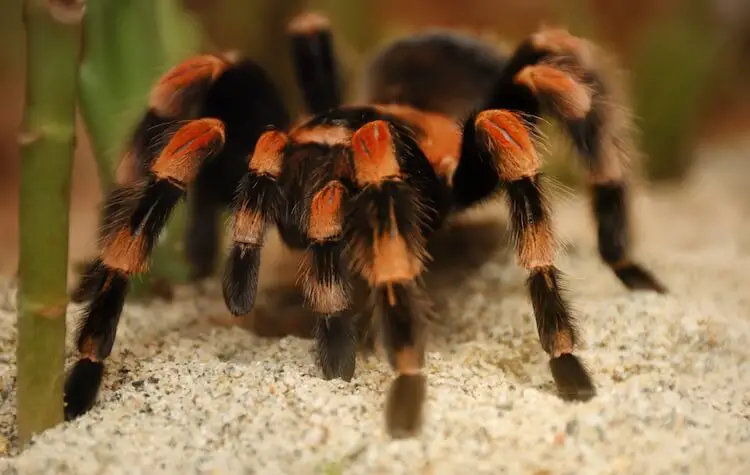
The Mexican Redknee Tarantula is the most popular Mexican species. They tend to be more well-known and are easier to find at pet stores than the other Mexican species.
These tarantulas are known for their bright orange-red coloring.
This orange-red color is most prominent on the “knees” of this species, or the parts of the legs that bend while the spider is standing. The rest of this spider is often a brown color.
In the wild these spiders are near-threatened due to habitat destruction. However, they are now bred in captivity for the pet trade and cost $75 to $125.
Mexican Redknees tend to live longer than most tarantula species. Females live up to 25 years and males live for five to ten years.
6. Costa Rican Zebra Tarantula
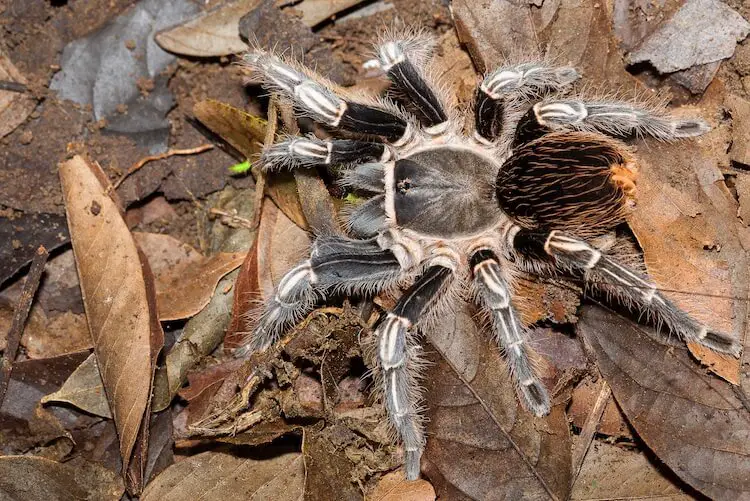
The Costa Rican Zebra Tarantula is from Guanacaste in Costa Rica.
Costa Rican Zebras have a unique color pattern. The upper shell is typically black, brown, or even dark purple. What gives this tarantula its name is its unique double stripes down its legs. Their legs are otherwise black with light brown hairs.
The Zebra Tarantula is highly adaptable, very hardy and easy to care for in captivity.
Costa Rican Zebras are one of the more calm and docile species. It is rare for it to throw its hairs and its venom is not dangerous to humans.
These spiders may live up to 15 years and they generally cost $25.
5. Curly Hair Tarantula
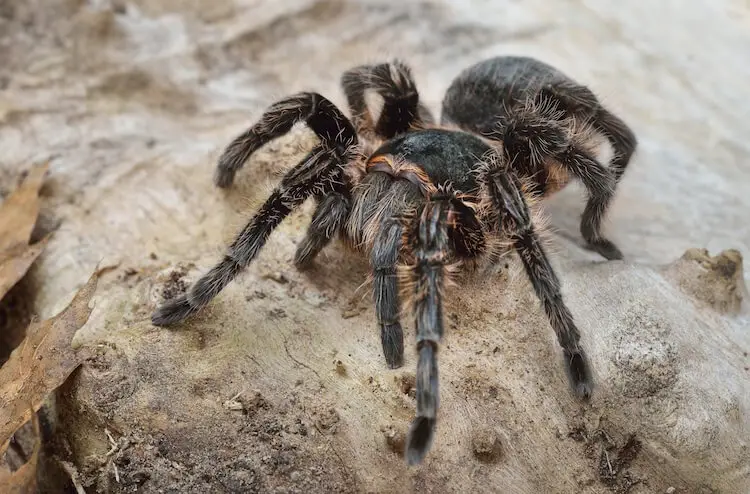
Curly Hair Tarantulas are named for their long, slightly curled hairs that cover their legs and some of their body. These bristles are often dark brown or black, but they can also have a golden sheen.
This species is great for first-time owners. They are docile, hardy, low maintenance, and very calm. They also enjoy sitting in your hand or on your arm.
Like the Costa Rican Zebra (#6), this tarantula is native to Costa Rica and is a ground-dwelling spider. They do not require a tall tank, but they live happily with places to hide such as behind rocks or leaves.
Curly Hair Tarantulas tend to sit in one spot most of the time. But, they can be seen hunting and occasionally rearranging their tank.
They are generally better suited to pet owners who want a quiet spider and cost $20-$50.
4. Chilean Rose Tarantula
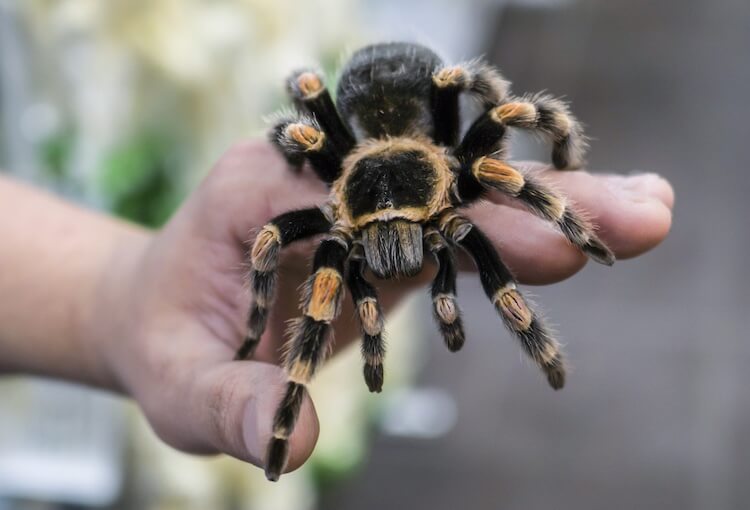
The Chilean Rose is a tarantula that is commonly solid in pet stores for $20 and $60.
Chilean Rose species are known for their varying colors, from a light tan to a rose-colored brown. They are also known for being docile and submissive, but it is best not to handle them often as they can become rather fussy.
They are a very low-maintenance tarantula.
Like most tarantulas, they can be fed infrequently and require little space. They are also very hardy and not very sensitive to changes in heat, so they can live at room temperature.
What makes Chilean Roses so entertaining is their behavior. They are known for moving around rocks, sticks, leaves, and anything else in their tank!
3. Brazilian Black Tarantula
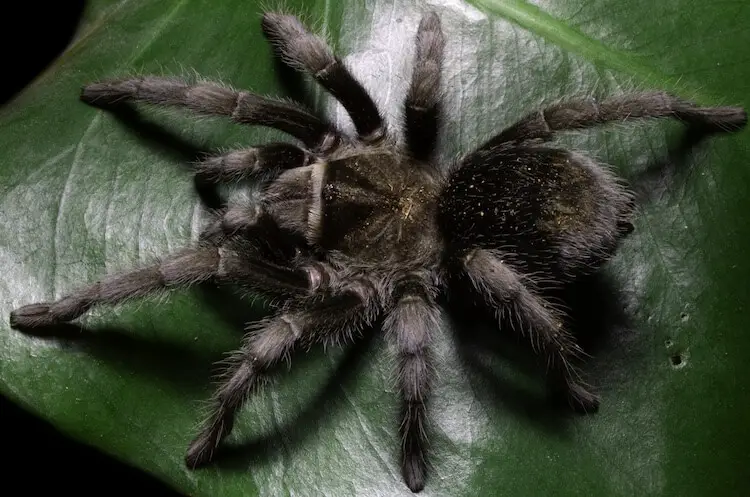
Brazilian Black Tarantulas are one of the best beginner spiders. They are famous for their docile temperament.
These spiders are really known for their temperament. While no tarantula should be held very often, this species is known for being one of the calmest and docile. They are not very quick and do not scare easily.
Brazilian Blacks are known for their jet-black color.
They are one of the most docile exotic pets and are highly sought after for their pretty, silky black color.
Brazilian Blacks are bred in captivity, but their popularity sometimes causes them to be hard to find. Enthusiastic keepers often purchase them as soon as they are available.
2. Arizona Blonde Tarantula
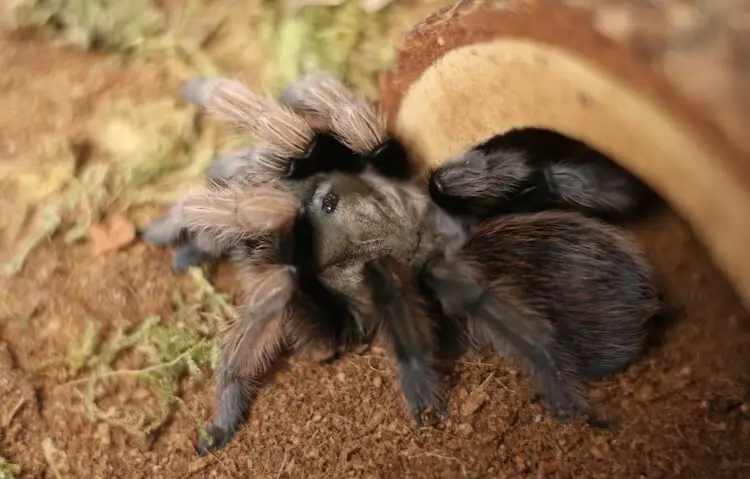
The Arizona Blonde Tarantula is also known as the Desert Blonde. They are found in the southwestern United States, mostly in Arizona. Because they are a US species, they are often easier to find and cheaper than most pet tarantulas.
This spider is normally brown or black and easily blends in with its desert environment.
Arizona Blondes tend to live for a long time, even the males.
Males will live 5-10 years, while females can live up to 30 years old! They are very hardy spiders that are well-suited to beginners. They are simple to care for, docile and cost $30 to $50.
1. Antilles Pink Toe Tarantula
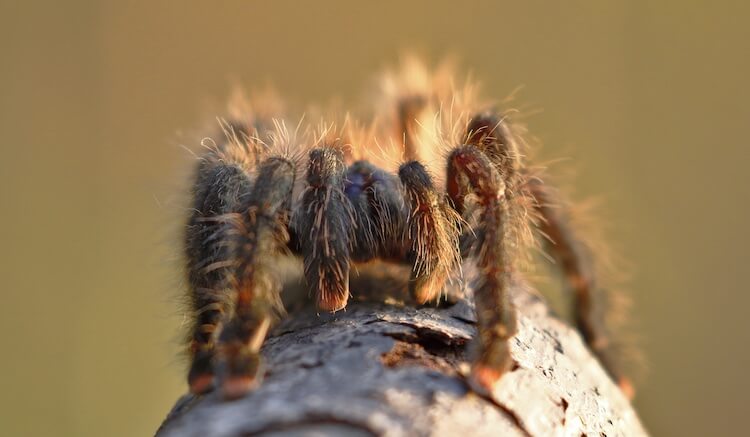
The Antilles Pink Toe Tarantula is the most popular pet tarantula.
Owners love them for the unique appearance. While most of this spider is black or brown, the tips of their legs are a bright pink or orange color. Sometimes their body can also have a blue, green, or magenta sheen to it.
These tropical spiders are native to Martinique, but are commonly bred in captivity.
As pets, their tank should be taller than it is wide. These tarantulas are tree-dwellers, so they live best with branches or cork to climb. Another unique husbandry feature of this spider is that they require a high humidity of around 80%.
Pink Toes are completely unique in color, very docile, simple to care for and cost just $30. They are the best combination of all of the qualities tarantula owners look for.
Are Tarantulas Good Pets?
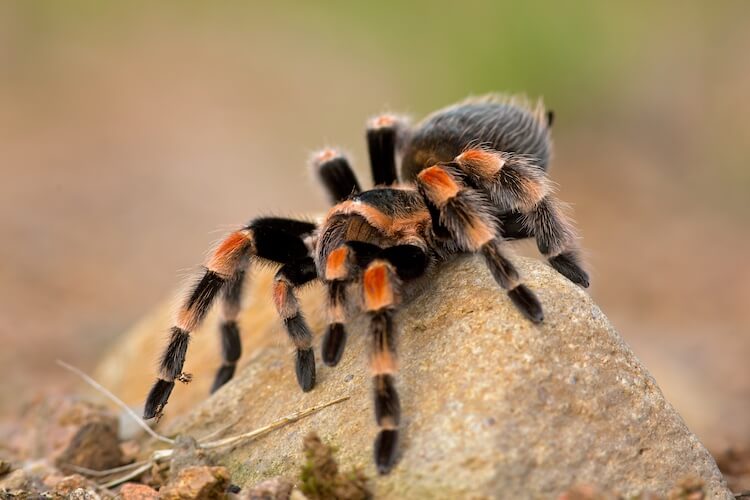
Some tarantulas can make good pets, but it depends on the species. All of the species in this article make good spiders for beginners. What really makes them great pets is that they are fun to watch.
Tarantulas are cheap to buy and do not require a large tank to thrive. They are also quiet, easy to feed and very hardy. They can also be a short or long-term pet. Males live for about four years, while females can live for over 20 years.
While they have a stigma, they do make great pets.
Are They Easy To Keep?
Tarantulas are normally very easy to keep and have simple day-to-day care needs.
Most species do not need heat lamps or special humidity levels. Most only eat once a week, and their prey can be dropped right into the enclosure for your spider to find.
Their enclosure needs limited maintenance too. It should just be spot cleaned when necessary.
The general rule is that the length and width of the reptile tank should be about three times your spider’s leg length. A 15-inch tank is suitable for most species.
Overall, they are very easy to care for.
Do Pet Tarantulas Bite?
Tarantulas should be held as little as possible. They can become stressed if you attempt to scoop them up, or even if you let them walk into your hand.
Though most beginner species can be docile, this does not mean that they will not be stressed during handling. They will bite if they feel threatened.
You do not want a tarantula to bite you, it would hurt you and your pet if you drop it.
Some species can tolerate handling more than others; but, it really depends on the individual. They are unpredictable, so do not expect a “calm” tarantula to act the same way every time.
These spiders do not seek affection like some pet lizards.
Summary
Tarantulas are unique spiders that can bring lots of fun to pet ownership.
They are low maintenance and great for first-time keepers. They are also great for someone who wants a quiet pet and does not want to interact with them.
Most tarantulas have the same basic care needs and are usually the same price.
The best species for a beginner are docile and easy to care for. Antilles Pink Toe, Arizona Blonde, Chilean Rose, and Brazilian Blacks make a great choice.
Do you have a favorite species? Tell us in the comments below.

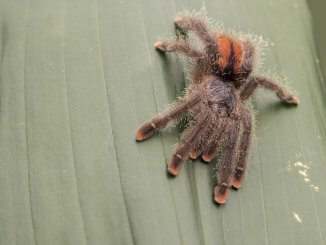
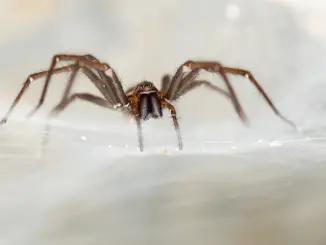
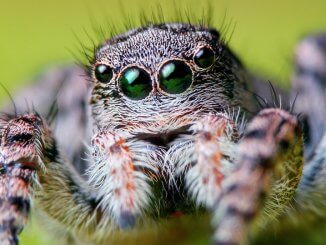

I had 2 Mexican brown and tans, (I needed a break from cats); I’d read that they live like 30 years, but mine lived perhaps 3-5, and that was it, so, perhaps they were male…I’m glad to see they probably didn’t die by mishandling / bad animal husbandry.
The 1st one was an impulse buy.
Feeding-wise…
My tarantulas were a redefinition of the word, ‘ferocious’, almost like the T-Rex from ‘Jurassic Park’, L.O.L.!! I can positively assure one ‘N, all: my tarantulas ‘liked’, cricket-soufflé*, but…they absolutely, LOVED mice-roast*;
The pet store DIDN’T inform me that tarantulas molt so I was pretty surprised; I should’ve better researched the species. I have cats, (3), now, and…I’m ‘sorely, tempted’, as ‘they’ say!
*(colloquialisms: obviously, I didn’t actually cook for ’em).
Hi, I have wanted a tarantula for about 10 years. I’m in a place with space and time for one now, but I’m struggling with where to safely and humanely purchase a beginner tarantula. Do you have any advice? Local to north Georgia. Thanks I’m advance!
Although many people are afraid of spiders and think they are dangerous, tarantulas are not poisonous and rarely bite, except in self-defense. Their bite is weaker than a typical bee sting. Tarantulas biting a small child, sick adult, or someone that is highly allergic to tarantula venom can be more serious.
Tarantulas can live up to 25 years and can be domesticated into affectionate but not cuddly pets, so you need to be prepared to make a commitment if you take one on. Most tarantulas cost between $20-$150.
It is illegal to own the following species of tarantulas:
Poecilotheria fasciata
P. ornata
P. smithi
P. subfusca
P. vittata
Fearnottarantulas.com is a great place to order from.
Exotic expos, breeders, and some exotic pet stores might be your best bet. I personally do not like to get anything (love animal wise aside from feeders) from normal pet stores. I highly recommend Fear not Tarantulas.
I’ve been keeping & breeding tarantulas and other arachnids for a while now, and they’re wonderful for someone who is an arachnophobe and wants to be “cured” lol. They’re lovable and each have their own individual personalities. I have a male Brazilian White Knee that will climb onto my hand when I am changing out his water dish, positions himself in the same spot on my hand and then will proceed to give me a “dry bite”, just a quick and venomless nip before casually strutting back into his enclosure. I have another male Mexican Red Knee (both of these boys are sub adults), anyhow, “Junior” is sweet & of all my 8 red knees, he will actually want to climb out onto me just to chill -I don’t initiate the handling of any of my spiders- since I have around 250 tarantulas, watering them can take hours, since each spider must ne kept in its own individual enclosure & one day I sat down to take a break during a watering session & caught something on my shoulder from the corner of my eye -Junior had been sitting there for-I don’t know how long- when I looked where Junior’s enclosure was, it was about an hour sonce I had been at his, so he had been on me for some time & I didn’t know it. Sweet creatures & they deserve to not be given such a bad rap. I could tell some wonderful stories about Black Widows, again, spiders with a very bad rap, but I keep a lot of them and am so comfortable with handling a spider, that sometimes I forget what I am dealing with and have “pinch grabbed” a wild female black widow to relocate her because she was in harms way & this spider played dead instead of try to bite me.
250 tarantulas? I bet you have a bunch of other interesting stories like this to tell. The ritualistic dry bite of your Brazilian White is fascinating.
I agree 100% that they get an unnecessarily bad rep, and people should be educated to respect and enjoy these species as much as other more PR-friendly animals. It is a sad but very much culturally-rooted hatred towards snakes, spiders and other animals, that often result in their unnecessary killing in the wild.